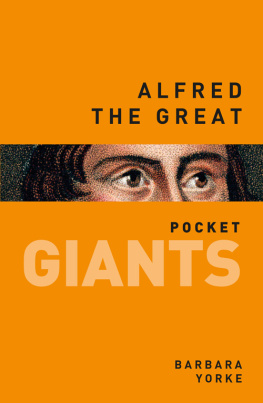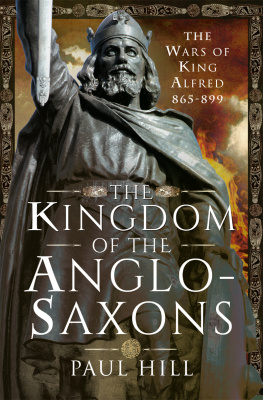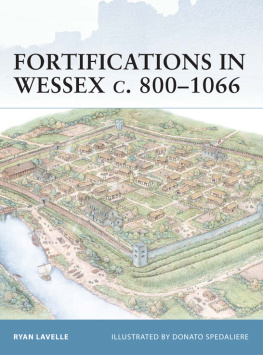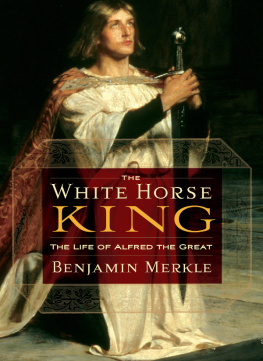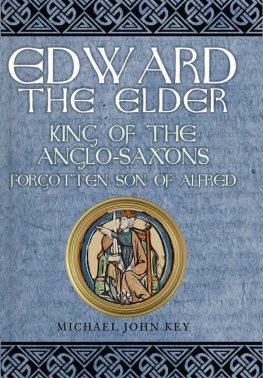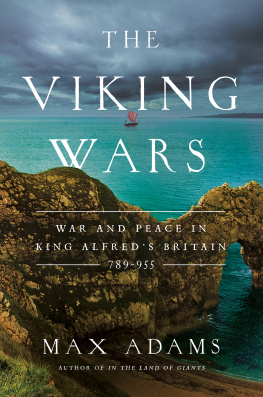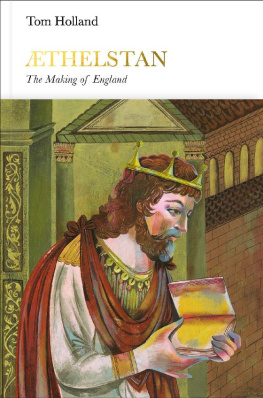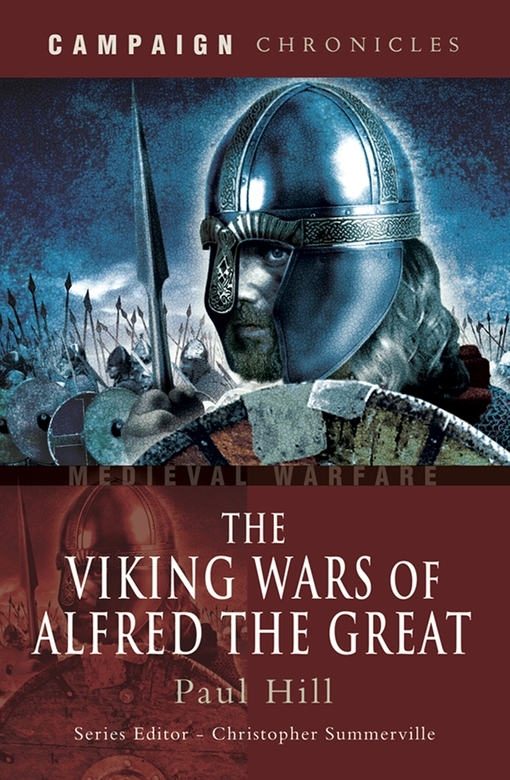Appendix I: Orders of Battle

The lists below can only be educated guesses, so poor is the historical evidence for the presence of anyone beneath the rank of commander. For each battle, the probable commanders and subcommanders are listed. Known leaders are in normal text and proposed subcommanders are presented in italics. Each leader of the era will have brought to the battlefield all those who owed him service as part of their lordship bond. Depending on who the leader was, numbers in the retinue could vary considerably. The retinues would be made up of thegns and ceorls. Thegns would have been armoured and the lesser ranks unarmoured. Swords, spears and shields characterised the main weapon array of both sides, with the Danes also using an early form of their famous Daneaxe. Any evidence for mounted troops is also included below. In cases where a king was accompanied by his fyrd, or expeditionary force, this is mentioned. For the Great Heathen Army, and later, for the followers of the Dane Hsten, it is assumed that the paucity of evidence for subcommanders and their followers should not be taken to indicate low numbers in terms of combatants. The size of the fortification at Shoebury should be evidence enough to suggest these armies were larger than recent arguments have suggested.
The Battle for York, 1 November 866
ANGLIAN
King lle
Townsfolk of York
THE GREAT HEATHEN ARMY
Ivarr
Halfdan
Ubba
The Battle for York, 23 March 867
ANGLIAN
King lle
(King) Osberht
THE GREAT HEATHEN ARMY
Ivarr
Halfdan
Ubba
Nottingham 868
ANGLO-SAXON
King Burgred of Mercia and his fyrd
King thelred I of Wessex and his fyrd
theling Alfred of Wessex
THE GREAT HEATHEN ARMY
Ivarr
Halfdan
Ubba
The Battle of Englefield, 31 December 870
ANGLO-SAXON
Ealdorman thelwulf of Berkshire
DANISH
Detachment of Great Heathen Army possibly led by a Jarl Sidroc and one other jarl
The Siege at Reading, 3 January 871
ANGLO-SAXON
King thelred I of Wessex and his fyrd
theling Alfred of Wessex
Ealdorman thelwulf of Berkshire
THE GREAT HEATHEN ARMY
Ivarr
Halfdan
Ubba
Bagsecg
The Battle of Ashdown, 8 January 871
ANGLO-SAXON
King thelred I of Wessex and his fyrd
theling Alfred of Wessex
THE GREAT HEATHEN ARMY
Ivarr
Halfdan
Ubba
Bagsecg
The Battle of Basing
ANGLO-SAXON
King thelred I of Wessex and his fyrd
theling Alfred of Wessex
THE GREAT HEATHEN ARMY
Ivarr
Halfdan
Ubba
The Battle of Meretun, 22 March 871
ANGLO-SAXON
King thelred I of Wessex and his fyrd
theling Alfred of Wessex
Heahmund, bishop of Sherborne
THE GREAT HEATHEN ARMY
Ivarr
Halfdan
Ubba
The Unknown Battle of 871
Fought between the battles of Meretun and Wilton at an unknown site in Wessex whilst Alfred was burying his brother at Wimborne.
ANGLO-SAXON
Unknown Anglo-Saxon ealdorman
THE GREAT HEATHEN ARMY AND NEW DANISH ARMY
Ivarr
Halfdan
Ubba
Guthrum
The Battle of Wilton, May 871
ANGLO-SAXON
King Alfred of Wessex and his fyrd
THE GREAT HEATHEN ARMY AND NEW DANISH ARMY
Ivarr
Halfdan
Ubba
Guthrum
Anwend
Oscetyl
The Battle of Cynuit,
ANGLO-SAXON
Ealdorman Odda of Devon
Unknown number of kings thegns
DANISH
Ubba
The Battle of Edington, May 878
ANGLO-SAXON
King Alfred of Wessex and his fyrd
Ealdorman thelnoth of Somerset
DANISH
Guthrum
Rochester, 884885
ANGLO-SAXON
King Alfred of Wessex and his fyrd
DANISH
Hsten
The Battle of Farnham, 893
ANGLO-SAXON
theling Edward the Elder leading an entirely mounted force
DANISH
Unknown Danish leader
Buttington 893
ANGLO-SAXON
Ealdorman thelred of Mercia and his fyrd
Ealdorman thelhelm of Wiltshire commanding an entirely mounted detachment
Ealdorman thelnoth of Somerset
Garrisons from east of River Parret, from west and east of Selwood and those garrisons from north of the River Thames and west of the River Severn
Ordeah, a kings thegn
Mervyn of Powys and his forces
DANISH
Hsten
Other Danes already in residence at Buttington
Hertford, Autumn 895
ANGLO-SAXON
London Garrison
DANISH
Unknown Danish leader, possibly Huncdeus
Naval Encounter, South Coast of England 896
ANGLO-FRISIAN
Nine vessels (unknown Frisian commander)
Casualties on English side listed as:
Lucaman, Kings Reeve
Wulfheard the Frisian
bbe the Frisian
thelhere the Frisian
Various members of King Alfreds household
Total 62 casualties
EAST ANGLIAN DANISH
Six Vessels
Unknown East Anglian Danish commander
Total 120 casualties
Appendix II: Biographical Notes
thelnoth, ealdorman of Somerset (d. c . 894). One of Alfreds most reliable and loyal servants, this leading figure in West Saxon politics served his king during the dark days at Athelney in 878, and was instrumental in securing various military victories for Alfred during the era of the second invasions of the Danes. He led a force to Buttington in 893 and besieged the Danes there. The following year he took a force to York thus beginningon behalf of a southern English kinga long history of dialogue, diplomacy and warfare between York and Winchester.
thelred Lord of the Mercians (d. 911). thelred ruled Mercia after the death of Ceolwulf II in or around 879880. He was not, however, a king, but ruled as an ealdorman. thelred recognised Alfred as his overlord and married thelfld (d. 918), Alfreds daughter. The Mercian ealdorman played a vital part in bringing the Welsh kingdoms to heel and securing their allegiance to Alfred. He also was instrumental in chasing away the Danish threat to London and Mercia in the 890s. His wife continued to rule Mercia after thelred died and made fame for herself during the conquests of the Danish-held north in the early tenth century.
thelweard (d. 998). The great-great-grandson of thelred I of Wessex, thelweard was ealdorman of the western provinces in the late tenth century. He was well known for his high political standing and his influence during negotiations during the second phase of Scandinavian incursions. Mostly, we are grateful to thelweard for a Latin translation of a lost version of the Anglo-Saxon Chronicle , which contains valuable additional information which would otherwise be lost to us. The work was dedicated to his cousin Matilda, the Abbess of Essen, who was a great-great-granddaughter of King Alfred. Predictably, his version of events reflects the sensibilities of the recipient of the gift.
thelwulf, king of Wessex (839858). The son of the powerful West Saxon King Ecgberht (802839), thelwulf was also the father of Alfred the Great. He was succeeded by four of his sons, of whom Alfred was the last. In 851 he won a renowned victory against the Vikings in England. In 855 he went to Rome and on his way back picked up a young bride in the form of Judith, daughter of Charles the Bald. However, a dispute among the West Saxon nobility and the rise to power of his son thelbald found him in political difficulties at the end of his reign.




